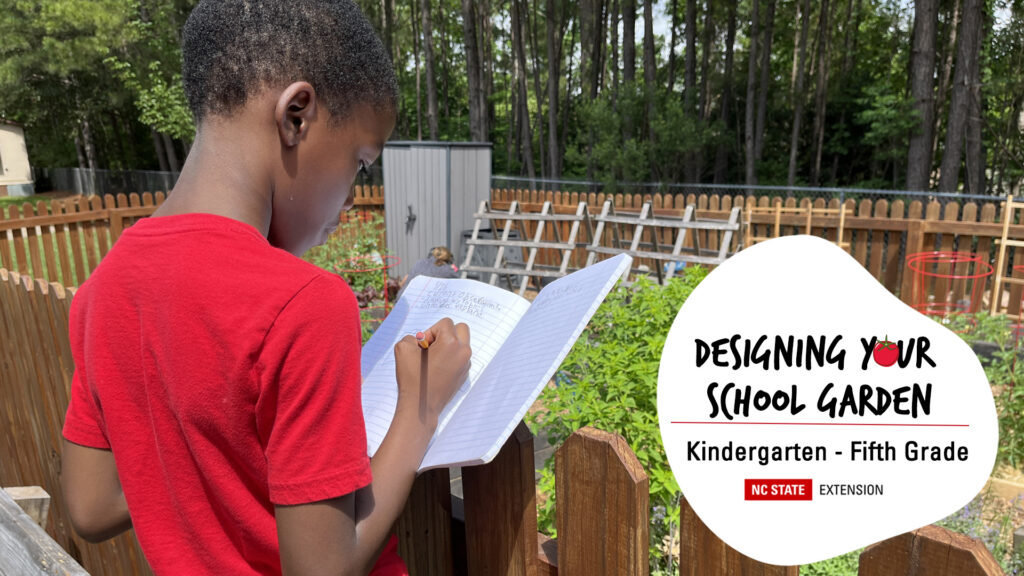Designing Your School Garden: K – 5th Grade
go.ncsu.edu/readext?1086440
en Español / em Português
El inglés es el idioma de control de esta página. En la medida en que haya algún conflicto entre la traducción al inglés y la traducción, el inglés prevalece.
Al hacer clic en el enlace de traducción se activa un servicio de traducción gratuito para convertir la página al español. Al igual que con cualquier traducción por Internet, la conversión no es sensible al contexto y puede que no traduzca el texto en su significado original. NC State Extension no garantiza la exactitud del texto traducido. Por favor, tenga en cuenta que algunas aplicaciones y/o servicios pueden no funcionar como se espera cuando se traducen.
Português
Inglês é o idioma de controle desta página. Na medida que haja algum conflito entre o texto original em Inglês e a tradução, o Inglês prevalece.
Ao clicar no link de tradução, um serviço gratuito de tradução será ativado para converter a página para o Português. Como em qualquer tradução pela internet, a conversão não é sensivel ao contexto e pode não ocorrer a tradução para o significado orginal. O serviço de Extensão da Carolina do Norte (NC State Extension) não garante a exatidão do texto traduzido. Por favor, observe que algumas funções ou serviços podem não funcionar como esperado após a tradução.
English
English is the controlling language of this page. To the extent there is any conflict between the English text and the translation, English controls.
Clicking on the translation link activates a free translation service to convert the page to Spanish. As with any Internet translation, the conversion is not context-sensitive and may not translate the text to its original meaning. NC State Extension does not guarantee the accuracy of the translated text. Please note that some applications and/or services may not function as expected when translated.
Collapse ▲
As the anticipation for the new school year builds across North Carolina, many students are just days away from stepping back into the classroom. For educators and school administrators considering how to enrich the learning environment, the prospect of a school garden offers a unique and engaging opportunity. Whether your school boasts an existing garden that could benefit from a fresh perspective, or if you’re eager to cultivate a new green space but feel overwhelmed by the initial steps, we hope this resource can help: “Designing Your School Garden: Kindergarten – Fifth Grade.”
This comprehensive guide is crafted to empower schools in creating vibrant and functional outdoor learning spaces. It goes beyond plants, offering a holistic approach that seamlessly integrates several crucial elements:
- Functionality: The guide provides practical advice on designing a garden that is accessible to all students and conducive to a variety of educational activities. It covers everything from plant combinations to planning pathways and seating.
- Aesthetics: Beyond its practical uses, a school garden can be a beautiful and inspiring addition to the campus. The resource offers insights into creating visually appealing plant combinations, blending diverse plant textures and colors, and fostering an environment that encourages connection with nature.
- Student Discovery: At its core, a school garden is a living laboratory. The guide emphasizes fostering student-led exploration and discovery, encouraging curiosity about the natural world, and providing hands-on learning experiences that go beyond the textbook.
- Curricular Connections: Perhaps one of the most powerful aspects of a school garden is its potential to serve as an interdisciplinary teaching tool. “Designing Your School Garden” highlights numerous ways to weave garden-based learning into the existing curriculum, spanning subjects such as science (plant life cycles, ecosystems), math (measurement, counting), language arts (journaling, descriptive writing), and even social studies (food systems, cultural connections to plants).
It is hoped that this resource can help North Carolina schools transform their outdoor spaces into dynamic educational hubs, nurturing not just plants, but also a deeper understanding, appreciation, and connection to the environment for their youngest learners.


